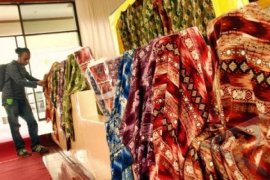"In general, batik producers have implemented 30-40 percent of ZWA. However, there are also batik products that use only ZWA," Reni Yanita informed on Saturday.
The one batik IKM that produces batik using natural dyes is Indigo Batik, which is located in Yogyakarta, she said.
The development of eco-friendly batik is currently in progress, with natural dyes being used for batik fabrics, weaving, and other traditional Indonesian fabrics, Yanita noted.
The ZWA method was developed by researchers collaborating with the Batik Center for Research under the Ministry of Industry, as well as universities, namely Gadjah Mada University, she informed.
ZWA is also increasingly being commercialized in Indonesia, including dyes from leaves, palm fronds, mangrove wood, as well as Industrial Plantation Forest (HTI) waste, she said.
Related news: Use technology in batik industry for increasingly competitive products
"Developing ZWA is also one of our strategies to reduce imports of chemical coloring," she explained.
The waste generated from ZWA batik production is expected to be environmentally friendly, since it uses raw materials that can be reused and recycled to minimize the use of chemicals that pollute the environment, Yanita said.
"We are socializing the use of ZWA with batik industry players. In addition, we are preparing ZWA in the form of ready-to-use pasta," she added.
The environmentally friendly production is attached to the duties and functions of the Ministry of Industry, in line with Law Number 3 of 2014 concerning Industry, which also mandates the implementation of green industries, she informed.
According to Yanita, part of ZWA's batik production has now penetrated the export market significantly.
Related news: Integrating modern motifs in traditional batik
Translator: Sella P G, Resinta S
Editor: Suharto
Copyright © ANTARA 2021











